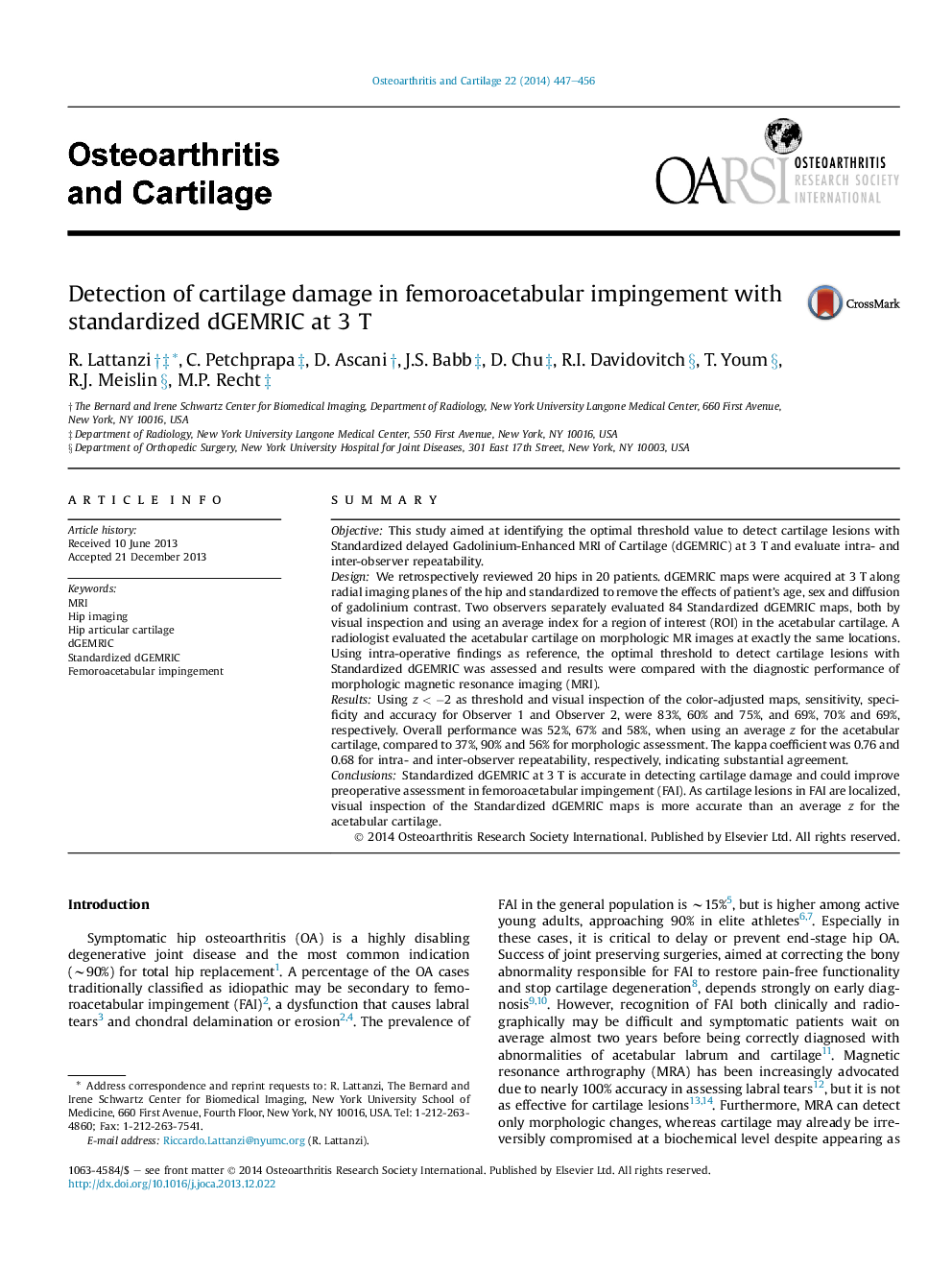| Article ID | Journal | Published Year | Pages | File Type |
|---|---|---|---|---|
| 3379342 | Osteoarthritis and Cartilage | 2014 | 10 Pages |
SummaryObjectiveThis study aimed at identifying the optimal threshold value to detect cartilage lesions with Standardized delayed Gadolinium-Enhanced MRI of Cartilage (dGEMRIC) at 3 T and evaluate intra- and inter-observer repeatability.DesignWe retrospectively reviewed 20 hips in 20 patients. dGEMRIC maps were acquired at 3 T along radial imaging planes of the hip and standardized to remove the effects of patient's age, sex and diffusion of gadolinium contrast. Two observers separately evaluated 84 Standardized dGEMRIC maps, both by visual inspection and using an average index for a region of interest (ROI) in the acetabular cartilage. A radiologist evaluated the acetabular cartilage on morphologic MR images at exactly the same locations. Using intra-operative findings as reference, the optimal threshold to detect cartilage lesions with Standardized dGEMRIC was assessed and results were compared with the diagnostic performance of morphologic magnetic resonance imaging (MRI).ResultsUsing z < −2 as threshold and visual inspection of the color-adjusted maps, sensitivity, specificity and accuracy for Observer 1 and Observer 2, were 83%, 60% and 75%, and 69%, 70% and 69%, respectively. Overall performance was 52%, 67% and 58%, when using an average z for the acetabular cartilage, compared to 37%, 90% and 56% for morphologic assessment. The kappa coefficient was 0.76 and 0.68 for intra- and inter-observer repeatability, respectively, indicating substantial agreement.ConclusionsStandardized dGEMRIC at 3 T is accurate in detecting cartilage damage and could improve preoperative assessment in femoroacetabular impingement (FAI). As cartilage lesions in FAI are localized, visual inspection of the Standardized dGEMRIC maps is more accurate than an average z for the acetabular cartilage.
